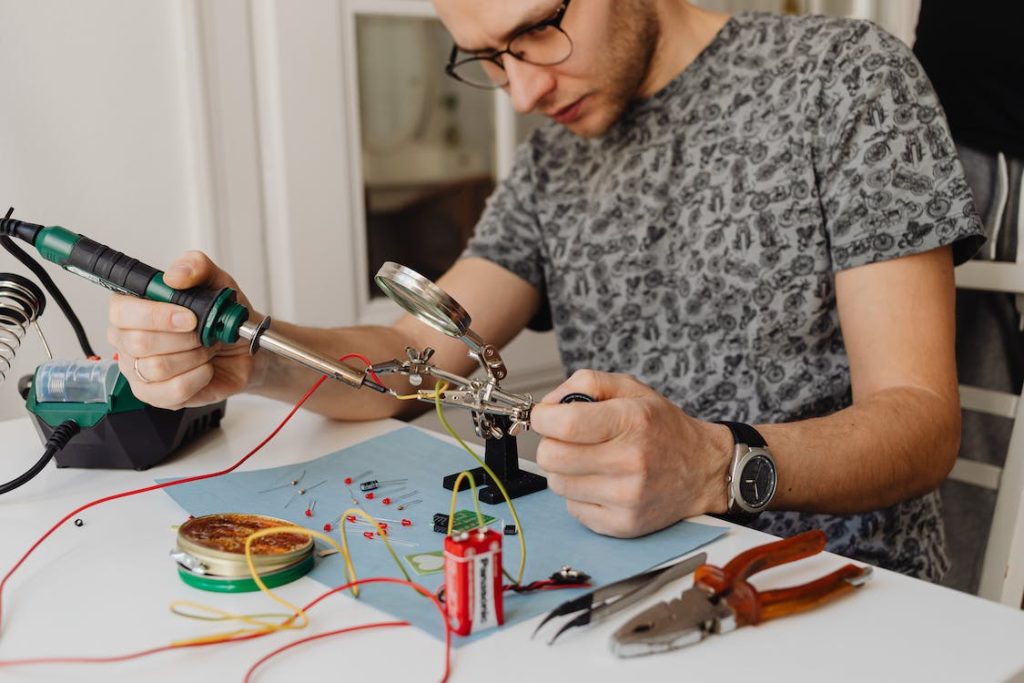How To Make a 12V mAh Lithium-Ion Battery Pack



How To Make a 12V mAh Lithium-Ion Battery Pack: A Comprehensive DIY Guide
In an increasingly digital world, the need for portable power sources has become paramount. Whether you’re an electronics enthusiast, a DIY hobbyist, or simply someone in need of a reliable power solution, creating your own 12V mAh lithium-ion battery pack can be a rewarding and cost-effective venture. This comprehensive guide will walk you through the intricate process, providing detailed insights at every step to help you craft a dependable power source that suits your unique needs.
Understanding Lithium-Ion Batteries
Before delving into the DIY process, it’s crucial to grasp the fundamentals of lithium-ion batteries.
What is a Lithium-Ion Battery?
A lithium-ion (Li-ion) battery is a rechargeable energy storage device that utilizes lithium as a key component in its electrochemical design. These batteries are renowned for their high energy density, lightweight nature, low self-discharge rate, and longevity. They have become the power source of choice for an array of applications, spanning from mobile phones and laptops to electric vehicles and renewable energy systems.
Why Opt for Lithium-Ion Batteries?
Lithium-ion batteries are highly favored due to their exceptional energy capacity and voltage stability. These attributes make them an ideal choice for powering a diverse range of devices and projects, ensuring a consistent and reliable power supply.
Creating Your 12V mAh Lithium-Ion Battery Pack
Now, let’s embark on the journey of crafting your very own 12V mAh lithium-ion battery pack.
Materials You’ll Need
As you prepare to embark on this DIY endeavor, take stock of the essential materials required for this project:
Lithium-Ion Cells: Begin by sourcing high-quality lithium-ion cells with the desired voltage and capacity (measured in milliampere-hours or mAh).
Battery Management System (BMS): A BMS is indispensable for maintaining the health of your battery pack. It balances the cells, prevents overcharging and over-discharging, and ensures the safety of your power source.
Battery Holder or Case: You’ll require a secure enclosure to house the lithium-ion cells and the BMS.
Soldering Iron and Solder: These tools are essential for creating secure electrical connections between the cells and the BMS.
Wire: Use insulated wire to establish the necessary connections between the individual cells and the BMS.
Heat Shrink Tubing: Employ heat shrink tubing to insulate and protect the electrical connections, safeguarding against potential shorts.
Voltage Display: While optional, integrating a voltage display into your battery pack can be immensely beneficial for monitoring its status during usage.
Step-by-Step Guide
To craft your 12V mAh lithium-ion battery pack, meticulously follow these step-by-step instructions:
Step 1: Strategize Your Battery Pack Configuration
The journey begins with a well-thought-out plan. Determine the number of lithium-ion cells required to achieve your desired voltage (12V) and capacity (measured in mAh). For a 12V battery pack, you can connect three or four lithium-ion cells in series.
Step 2: Prepare the Cells
Before assembly, ensure that all selected cells have uniform voltage levels and capacity. If discrepancies exist, consider charging and discharging the cells as needed to balance them.
Step 3: Connect the Cells in Series
With the cells prepared, proceed to connect them in series. This entails soldering wires between the positive terminal of one cell and the negative terminal of the adjacent cell. This series connection increases the voltage while maintaining the capacity.
Step 4: Integrate the Battery Management System (BMS)
The BMS is the guardian of your battery pack, safeguarding it from potential harm. Connect the BMS to your series-connected cells, adhering meticulously to the manufacturer’s guidelines for proper wiring. The BMS should encompass connections for each individual cell’s positive and negative terminals.
Step 5: Ensure Insulation and Security
To prevent electrical shorts and ensure the safety of your battery pack, meticulously insulate the connections between cells and the BMS using heat shrink tubing. Place the entire assembly within a suitable battery holder or case, ensuring a snug fit and securing the components in place.
Step 6: Test and Monitor
Before deploying your battery pack, rigorously test its voltage and capacity to ensure that it aligns with your specifications. To enhance your user experience and monitor the status of your power source during operation, consider integrating a voltage display into your battery pack.
Tips for a Reliable Battery Pack
While the process of creating a 12V mAh lithium-ion battery pack can be immensely rewarding, ensuring its reliability and safety is paramount. Here are some invaluable tips to consider:
1. Prioritize Safety Precautions
Throughout the entire process, adhere to safety precautions diligently. Lithium-ion cells can be sensitive and pose hazards if mishandled. Never puncture, crush, or expose them to extreme temperatures.
2. Invest in Quality Components
To guarantee the longevity and dependability of your battery pack, invest in high-quality lithium-ion cells and a reputable BMS. Cutting corners on component quality can compromise safety and performance.
3. Select the Right Charger
When it comes to charging your battery pack, ensure you employ a charger that aligns with the voltage and capacity specifications of your battery. Incompatible chargers can lead to damage and safety concerns.
4. Perform Routine Maintenance
To prolong the life of your battery pack and maintain its optimal performance, regularly monitor the voltage levels of individual cells. Additionally, ensure that the BMS functions correctly to prevent overcharging or over-discharging.
Conclusion
The ability to craft your own 12V mAh lithium-ion battery pack opens up a world of possibilities, from powering DIY electronics projects to creating reliable portable power sources for a range of applications. However, it’s crucial to approach this endeavor with meticulous attention to detail, safety, and quality.
By following this comprehensive guide and embracing best practices throughout the process, you can embark on a successful journey to create a custom lithium-ion battery pack that not only meets but exceeds your expectations.
For more detailed answers, comprehensive guides, and practical solutions to a diverse array of DIY topics, explore our website. We’re dedicated to providing in-depth information to empower individuals like you with the knowledge to tackle their questions and projects effectively.







